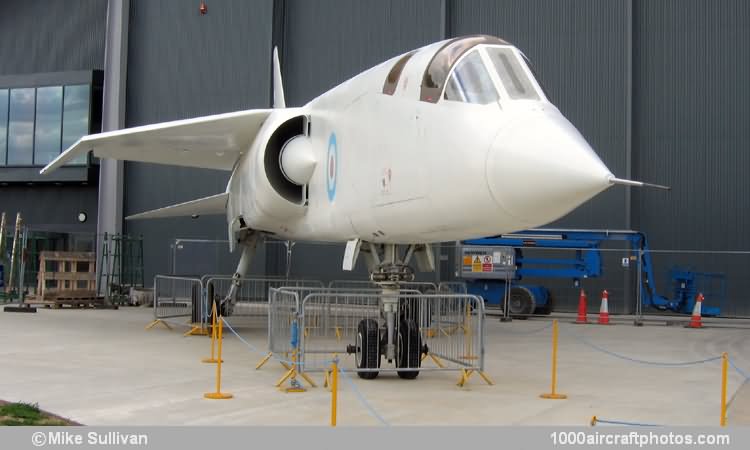12/31/2010. Remarks by Johan Visschedijk : "The specification of the TSR.2 was based originally on Operational Requirement 339 for an aircraft to replace the Canberra in its long-range interdiction and reconnaissance roles. The TSR.2 could far exceed these requirements, and was suitable for all types of attack duty, with weapons ranging from rocket projectiles to high-yield nuclear missiles, and could be used in the strategic deterrent role.
Official news of the TSR.2 development program was given on January 1, 1959, with the announcement that the main contract for a new supersonic attack and high/low-level reconnaissance aircraft for the RAF was to be placed with Vickers-Armstrongs (Aircraft) Ltd, who would share the work equally with English Electric Aviation. By 1960, both of these companies were incorporated in British Aircraft Corporation and the design of the TSR.2 had been undertaken at Weybridge and Warton by a joint project team
Weybridge works had responsibility for the fuselage, electronics and armament installations. Preston was responsible for the wings, rear fuselage, power plant installation, fuel system, powered controls and autostabiliser system. The crew of two sat in tandem on Martin-Baker 8VA rocket-powered ejection seats, under individual rearward-hinged jettisonable canopies, in air-conditioned and refrigerated cabins. Ejection cycle was timed so that navigator left first if the pilot actuated his ejection system, although the navigator could eject by himself.
Power plants were two afterburning turbojet engines developed from Bristol Siddeley Olympus 22R and each with potential thrust of 33,000 lb (14,970 kg), mounted side-by-side in the rear fuselage, fed by large integral fuel tanks in both wings and fuselage. Engine air intakes were of variable-area type with movable half-cone shock bodies. The TSR.2 was fitted with a Bristol Siddelely Cumulus gas turbine auxiliary power unit, which enabled it to remain at dispersal for long periods without any ground support except refueling facilities.
The high-wing configuration of the TSR.2 was chosen to avoid undesirable airflow patterns over the horizontal tail surfaces. For the same reason, turned-down wing tips were utilized instead of the wing anhedral that was usual to ensure stability on aircraft in this class. To meet the requirement for short-field operation, the TSR.2 had large blown flaps extending over the full-span of the wings, except for the turned-down tips. To make this possible, all control surfaces were at the tail.
Nine development aircraft (s/n XR219 to XR227, c/n XO-1 to XO-9) and eleven pre-production aircraft (s/n XS660 to XS670, c/n XO-10 to XO-20) were ordered, and on September 27, 1964, XR219 was the first aircraft flown. However, only six months later, March 31, 1965, the British Cabinet, led by Harold Wilson, decided to cancel the program, which was announced April 6 by Chancellor James Callaghan.
At that time only XR219 and XR221 were completed (the latter never flew), and together with the incomplete XR223 they were taken to Shoeburyness where they were used to investigate the effect of gunfire on modern airframes, and subsequently scrapped.
All TSR-2 tooling, jigs and partially completed aircraft were scrapped, except XR220 which is at the RAF Museum, Cosford, and XR222 which is at the Imperial War Museum, Duxford, where the aircraft above was pictured some six months after it had been restored over an eighteen month period."
View also this movie.
